
At present, there are three main fluorite ore beneficiation processes: hand separation, gravity (jig) separation process, and flotation process. Due to the dilution of fluorite ore and the disseminated relationship between fluorite ore and gangue, flotation has become the main fluorite ore beneficiation method.
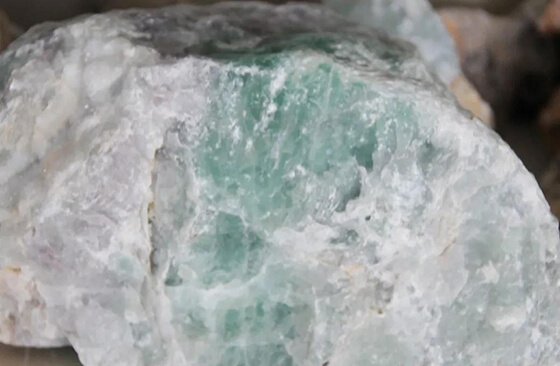
According to different gangue minerals, the fluorite ore can be divided into quartz-fluorite ore, calcite-fluorite ore, sulfide fluorite ore, and barite-fluorite ore. Let’s learn about the various types of fluorite flotation processes in detail.
The quartz-type fluorite ore is mainly composed of fluorite (up to 85%) and quartz, with only a small amount of calcite, barite, and sulfide.
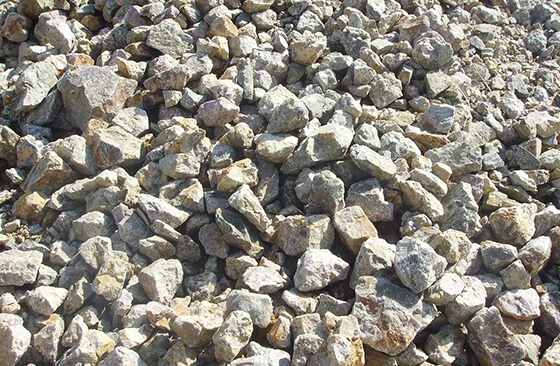
In the production, the quartz-fluorite ore generally adopts one time of grinding roughing, regrinding of rough concentrate, and multiple times of concentration process. The sodium carbonate is used as the adjusting agent, the pulp is adjusted to alkaline, preventing the water multivalent cation activation of quartz. When the use fatty acid is used as the collector, the right amount of sodium silicate should be added to inhibit the silicate gangue mineral, At the same time, the dosage of sodium silicate should be controlled (a small amount of sodium silicate plays an activation effect in fluorite, while excessive amount fluorite plays an inhibiting effect in fluorite).
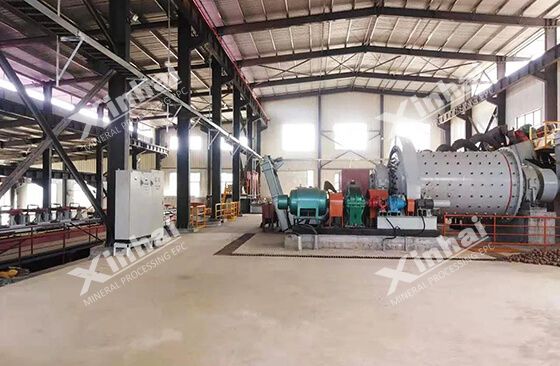
According to the distribution of useful minerals, the quartz-fluorite ore can be mainly divided into coarse-grained dissemination and fine-grained dissemination, which are different in the flotation separation process.
The coarse-grained disseminated quartz-fluorite ore usually uses the fatty acid collector, sodium carbonate as the pulp regulator, sodium silicate as the quartz inhibitor, and the high-quality fluorite concentrate can be obtained by one rouging and multiple concentration process. The flotation reagent of -grained disseminated quartz-fluorite ore is the same as that of coarse-grained disseminated quartz-fluorite ore, but due to the fine disseminated particle size of the target mineral, it is necessary to strengthen the grinding, mostly adopts stage grinding and stage separation process.
The main minerals of calcite-fluorite type ore are fluorite and calcite (content as high as 30% or more), some of which contain a small amount of quartz, forming the quartz-calcite-fluorite type ore, which is refractory ore.
The main reason why it is difficult to separate is that both calcite and fluorite are calcium-bearing minerals with similar surface physical and chemical properties. When they coexist in the solution, the mutual transformation between minerals is easy to occur. Therefore, selecting the appropriate collectors and inhibitors is the key to achieving the separation of fluorite and calcite.
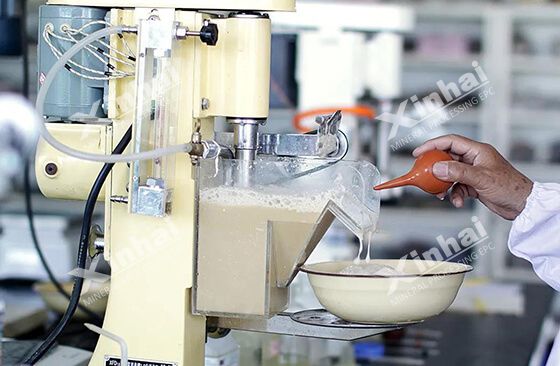
In order to achieve the separation of calcite and fluorite, it is necessary to adjust the pH value of the pulp and cooperate with the collector to achieve a good separation effect. When the pH value is 8~9.5, the sodium silicate, acidified sodium silicate, sodium hexametaphosphate, lignin sulfonate, dextrin, and tannin are used alone or in combination to inhibit calcite, so as to achieve the purpose of separation. In addition, the tannin extracts and lignin sulfonates can be used to inhibit gangue minerals in complex fluorite ores containing more calcite, limestone, and dolomite, which can obtain a better flotation separation effect.
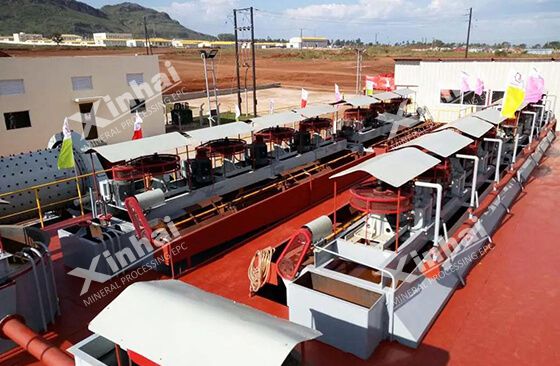
In actual production, flotation is the main beneficiation technology for sulfide fluorite ore. First, the sulfide ore is preferred to float with a xanthate collector, and the fluorite flotation tailings are treated as fluorite ore separately (multiple concentrations with fatty acid). Sometimes, small amounts of sulfide inhibitors (such as cyanide) are added to suppress residual sulfide in the fluorite flotation operations, ensuring the quality of the fluorite concentrate.
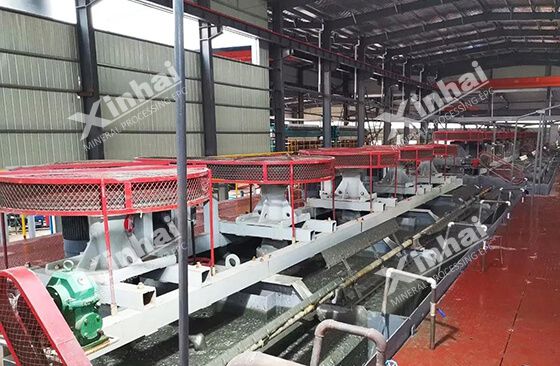
In addition, roasting, leaching, and other beneficiation technologies can also be used to extract valuable metals and decompose fluorite. The process is relatively simple, and high-quality fluorite products can be prepared while comprehensively recovering and utilizing valuable metals.
The barite type fluorite minerals are mainly barite and fluorite, and the barite content is generally 10%-40%, often accompanied by pyrite, galena, sphalerite, and other sulfide minerals.
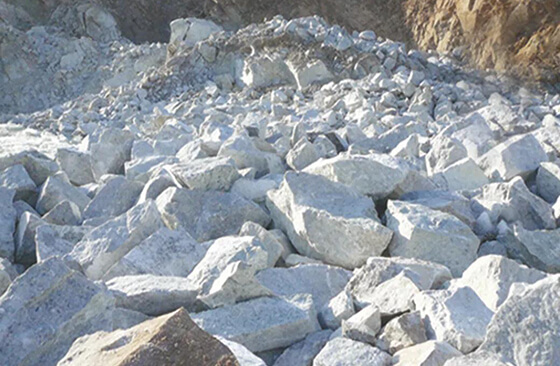
The barite-fluorite ore beneficiation generally adopts the mix flotation to obtain the mixed concentrate of barite and fluorite, then the barite and fluorite are separated. According to the order of the emergence of barite and fluorite, it can be divided into two schemes: one is to inhibit barite and float fluorite, it can obtain the high-grade barite concentrate and fluorite concentrate. Another is to inhibit fluorite and float barite, this method means to get barite concentrate firstly, the fatty acid collector and sodium silicate are added in tailings, finally, the fluorite concentrate can be obtained after several times (7~9 times) of concentration. This process is simple, easy to operate, and can get qualified barite concentrate, but the grade of fluorite is often not high.
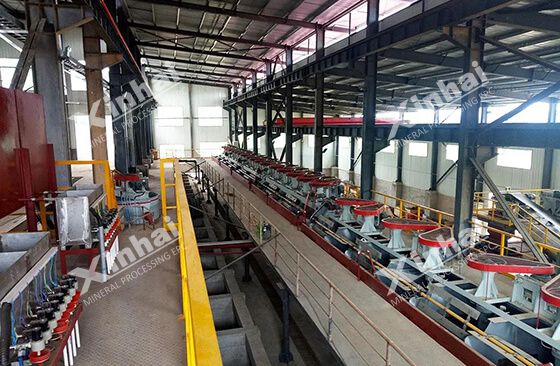
In practical production, the separation of fluorite and barite usually adopts float fluorite and inhibit the barite process, the fatty acids are used as fluorite collector, caustic starch, dextrin, etc organic inhibitors coordinate with sodium hexametaphosphate, sodium silicofluoride, sodium silicate, aluminum, iron, and other inorganic salt inhibitors, thus achieving the separation of fluorite and barite.
These are four kinds of fluorite flotation processes. In the fluorite flotation process, the flotation reagent system and grinding fineness are important factors affecting the flotation effect of fluorite, which should not be decided blindly. It is suggested that the ore beneficiation test should be carried out first, the fluorite flotation process and reagent system should be determined after fully understanding the ore properties, the actual situation of the dressing plant, investment budget, and other factors.
To find out more about our products and solutions, please fill out the form below and one of our experts will get back to you shortly.